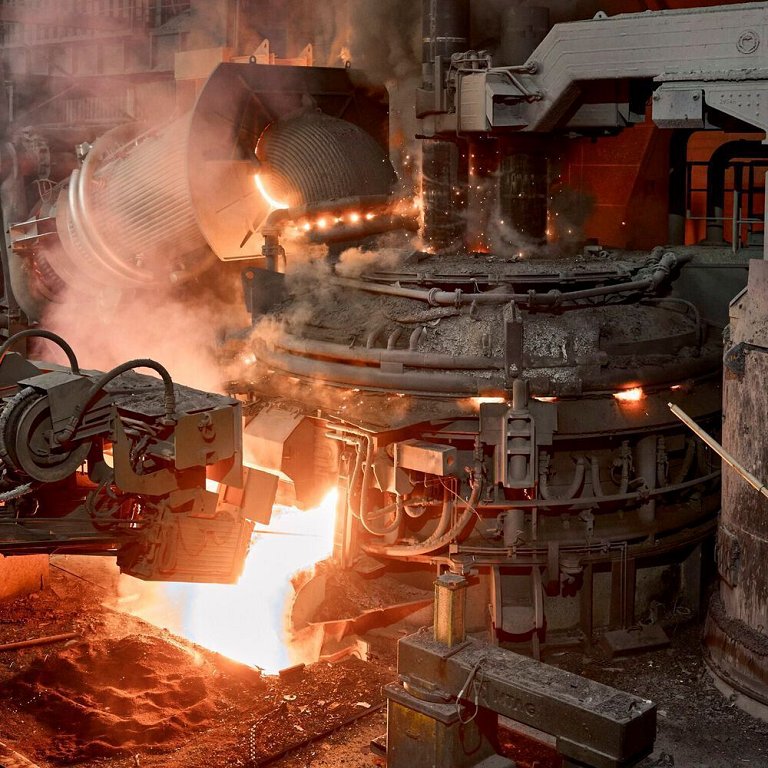Green Steel: Pioneering a sustainable future in steel production
19.09.2024
Steel production is on the verge of a major shift toward sustainability, with the rise of green steel leading the way. By utilizing cutting-edge technologies like electric arc furnaces and renewable energy, green steel drastically reduces CO2 emissions.
 Green Steel is produced by using steel scrap in an electric arc furnace powered by electricity generated from renewable sources.
Green Steel is produced by using steel scrap in an electric arc furnace powered by electricity generated from renewable sources.
(Source: Swiss Steel)
Steel production is at the beginning of a revolutionary transformation. The change from conventional production methods to climate-friendly processes is not only a response to the increasing demands on industry, but also a decisive step towards a sustainable future. At a time when climate protection is playing an increasingly important role, the steel industry is doing everything it can to minimise its carbon footprint — and green steel is key to this transformation.
Conventional steel production is responsible for around 7 percent to 9 percent of global CO2 emissions, making it one of the biggest challenges on the road to a climate-neutral world. To significantly reduce these emissions, it is essential to use innovative technologies and sustainable processes. The Swiss Steel Group is a pioneer in this field and consistently relies on electric arc furnace technology, which generates up to 83 percent lower CO2 emissions than conventional processes.
Green Steel — More than just a trend
Green Steel stands for climate-neutral or low-CO2 steel that is produced using the latest technologies to significantly reduce the environmental impact of steel production. The focus here is particularly on the Low Emission Steel Standard (Less), which for the first time enables comparability of decarbonisation efforts in the steel industry. With Less, steel products are classified according to their CO2 footprint, making them transparent and comprehensible for the end user.
Applications of Green Steel
The possible applications of green steel are diverse and range from the automotive industry to mechanical engineering and medical technology. In the automotive industry, green steel contributes to the reduction of vehicle weight and thus to an improvement in energy efficiency through optimised material properties. In mechanical and plant engineering, the environmentally friendly steel ensures maximum strength and reliability under extreme conditions. In medical technology, too, Green Steel impresses with its hygienic and corrosion-resistant properties, which make it ideal for use in surgical instruments.
Technological innovations and their significance
Green Steel is produced by using steel scrap in an electric arc furnace powered by electricity generated from renewable sources. For instance, with its Green Steel Climate+ and Green Steel Stainless+ products, the Swiss Steel Group offers products with low CO2 emissions. These steels are made with over 95 percent recycled material and meet the highest standards of corrosion resistance, strength and mechanical properties.
The path to a sustainable future
Green Steel is not just a buzzword, but a concrete step towards a more sustainable future. The steel industry is at the beginning of a profound transformation that will have a lasting impact not only on the environment but also on the economy. The challenges along the way are considerable — from the availability and price of green electricity to the development of the hydrogen infrastructure. However, with continuous research, development and collaboration between all relevant players, it is possible to overcome these obstacles and pave the way for climate-neutral steel production.
Source: Swiss Steel
Article source: www.etmm-online.com




































